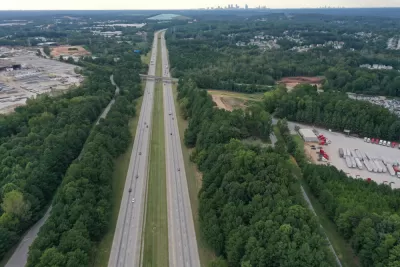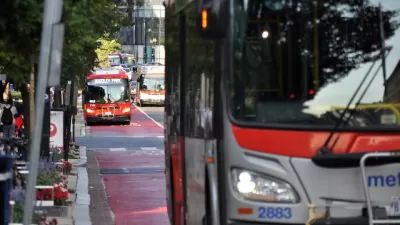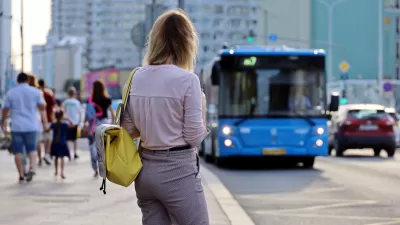An analysis of Clayton County, Georgia, which lost access to public transit for five years, shows a significant increase in unemployment rates and poverty during that timeframe.

A new study from Clayton County, Georgia links a rise in unemployment and poverty to transit cuts, according to an article by Jared Brey in Governing. “The study’s findings support the ‘spatial mismatch’ theory, which holds that poor transit access leads to fewer job opportunities and lower incomes for residents.”
The study analyzed poverty and unemployment rates in the county during five years between 2010 and 2015 when the county had no bus service connecting it to Atlanta, making transit-dependent Clayton County residents unable to reach the city. “In the half-decade interim, the county endured “substantial increases in poverty and unemployment rates” which are explained by the loss of bus access, according to new research published last month in the journal Urban Studies.”
“In general, there’s strong evidence from a variety of research fields that transit access supports good economic outcomes, and that cuts to transit service are economically harmful,” but this study in particular provided a “rare opportunity” for a natural experiment. “It’s often hard to isolate the economic effects of certain events, like the pandemic or natural disasters, because they happen over large areas and affect lots of communities in the same way. But in the case of Clayton County, the researchers were able to compare census tracts that initially had bus access and then lost it with demographically similar tracts that weren’t affected by the cuts.”
FULL STORY: New Evidence Links Transit Cuts With Poverty and Unemployment

Alabama: Trump Terminates Settlements for Black Communities Harmed By Raw Sewage
Trump deemed the landmark civil rights agreement “illegal DEI and environmental justice policy.”

Planetizen Federal Action Tracker
A weekly monitor of how Trump’s orders and actions are impacting planners and planning in America.

The 120 Year Old Tiny Home Villages That Sheltered San Francisco’s Earthquake Refugees
More than a century ago, San Francisco mobilized to house thousands of residents displaced by the 1906 earthquake. Could their strategy offer a model for the present?

In Both Crashes and Crime, Public Transportation is Far Safer than Driving
Contrary to popular assumptions, public transportation has far lower crash and crime rates than automobile travel. For safer communities, improve and encourage transit travel.

Report: Zoning Reforms Should Complement Nashville’s Ambitious Transit Plan
Without reform, restrictive zoning codes will limit the impact of the city’s planned transit expansion and could exclude some of the residents who depend on transit the most.

Judge Orders Release of Frozen IRA, IIJA Funding
The decision is a victory for environmental groups who charged that freezing funds for critical infrastructure and disaster response programs caused “real and irreparable harm” to communities.
Urban Design for Planners 1: Software Tools
This six-course series explores essential urban design concepts using open source software and equips planners with the tools they need to participate fully in the urban design process.
Planning for Universal Design
Learn the tools for implementing Universal Design in planning regulations.
Clanton & Associates, Inc.
Jessamine County Fiscal Court
Institute for Housing and Urban Development Studies (IHS)
City of Grandview
Harvard GSD Executive Education
Toledo-Lucas County Plan Commissions
Salt Lake City
NYU Wagner Graduate School of Public Service





























